POSTCITY
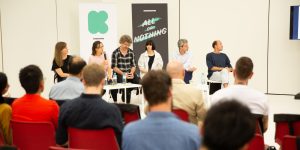
Gallery Spaces Panel V: Artists & scientists – Exploring new forms of collaboration (Scientist in Residence Program)
Just as artists today are increasingly interested in science and technology, scientists and technologists are turning to the arts as a source of new perspectives and tools for communication. This trend requires new initiatives to establish better links between the worlds of art and science, as well as between cultural and research institutions. Through its Art&D labs, Gluon supports artist residencies in laboratories of companies, research institutes and universities. Through its Scientists in Residence programme, it encourages artists to open their studios to scientists and technologists. On the basis of their experiences in these programmes, the scientists of this panel will reflect on the following questions: To what extent can these interdisciplinary collaborations stimulate innovative ideas and projects of social relevance? What challenges do scientists have to face in working together with artists? And how can organizations help them achieve meaningful exchanges?
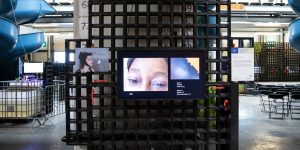
VOIGHT-KAMPFF
Yonlay Cabrera (CU)
The project is based on a procedure for measuring the involuntary ocular changes that happen in a group of people, determined according to categories that correspond with the “Ideological Apparatus of State” (Louis Althusser) used by the Cuban Government. The people are submitted to questions that “stress-test” the normal values in order to determine to what extent they reproduce the ideal behaviors internalized by the ideological apparatus.

Insect a new media
Fernando Asensio (ES), José Luis Cuenca (EC), Alejandra Florez (CO), Silvia García (ES), Noelia Medina (ES), Jordi Sos (ES)
This interactive installation proposes a symbiosis between obsolete technology and natural environment, as an approach to a dystopian future world. A group of sculptural objects composed of plants and technological waste, a multi-screen projection device, a technological codex and a descriptive catalogue make up this undead multimedia project.
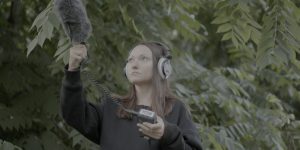
Bird Language
Helena Nikonole (RU)
This project explores the possibilities of Artificial Intelligence in a bio-semiotics context: the artist uses machine learning to explore the sign systems of birds.

Gallery Spaces Panel IV: Interdisciplinary Art – how becoming established?
The art market refers to the process of art distribution and sales. Museums, galleries, collectors, curators, critics are part of the active market participants influencing the dynamics. Artists to choose interdisciplinary approaches are in need of resources, display and active discourse with all industry participants to increase awareness, understanding and appreciation for interdisciplinary work. What is needed of all industry participants to propel interdisciplinary work to a representation established level? Art and science continuously discover common questions and modes of operation, resulting however in fundamental different outcomes. These differences create friction and great space for collaborations between disciplines.

Arte Eletrônica Indígena (Electronic Indigenous Art)
Thydêwá
The Arte Electrônica Indígena (AEI) project was designed and executed by the NGO Thydêwá. It consisted of a series of ten short artistic residencies in indigenous communities in the Brazilian Northeast in order to co-create works of electronic art. These were exhibited to the public at the Museum of Modern Art, Salvador da Bahia, in August 2018 and have since toured the indigenous communities themselves.
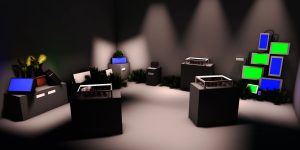
GROWING OUT OF UNNATURAL
Universitat Politècnica de València, San Carles- Fine Arts Faculty, MA Visual Arts & Multimedia (ES)
Using art (techné), as a creative vehicle between nature, world and society, the projects brought together by this exhibition act as funambulistic machines that walk on the threshold of these states, breaking through spaces full of perpetual instability in the order of thinking and also in the order of doing.
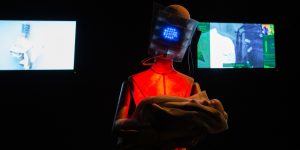
ROBOTIKA, The Nannybot
Joaquín Fargas (AR)
Robotika is a cyber nanny whose duty is to preserve the human race. Robotika challenges the limits of the human being concept. It is a robot vested with artificial intelligence that shall act as a “galactic ark,” looking for a suitable environment for human development.
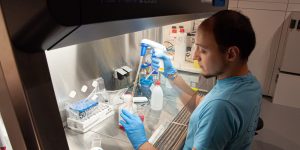
Lat BioLab
UMAI Maimonides University (AR)
Is Humanity near its end? Is our community in an evolutionary process of collective thought? These are some of the questions we ask ourselves at the Lat BioLab.
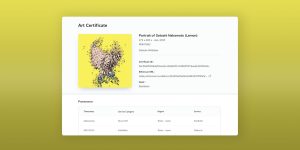
Startbahn, Inc., Tokyo
Startbahn is developing a blockchain infrastructure for art registry and trade. Art Blockchain Network (ABN, tentative name) enables all art-related stakeholders to share an artwork provenance and to trade safely. Startbahn aims to broaden the market potential and liquidity for art. In addition to ownership proof and transition, users can make contracts on copyright regarding a specific artwork on ABN, including artist’s resale rights for the secondary art market. Moreover, including our web platform, multiple art-related companies have already joined the ecosystem of ABN. The number of partners is increasing rapidly.


